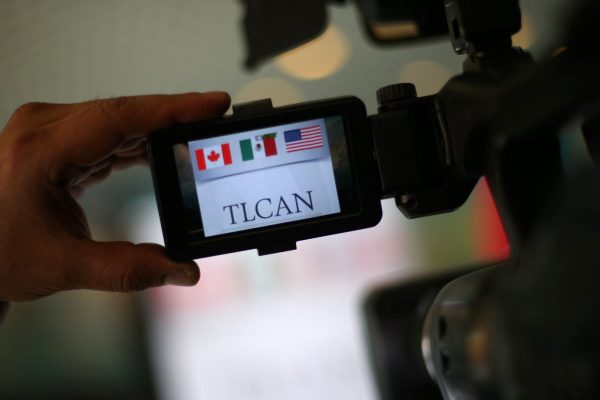But assuming that the negotiations proceed to a successful conclusion, it remains imperative for the United States to achieve in NAFTA what it lost by pulling out of the Trans-Pacific Partnership (TPP) — that is, a precedent-setting baseline set of rules governing digital trade.
The world is moving on and other nations are negotiating digital trade regimes that are either incomplete or antithetical to US priorities and goals. Examples of the former are the EU–Canada FTA and the upcoming EU–Japan FTA.
Because of internal politics, the EU will not commit to a fully fleshed-out set of rules as was exemplified by the TPP. And looming ever larger is China’s radically different vision of the internet — a vision rooted in ‘digital sovereignty’ and an inevitable fractionalisation of the worldwide internet.
Against these developments, negotiations of the TPP-11 now show promise of positive results. But even if successful, it will be some years before the TPP’s advanced e-commerce rules come into effect.
The TPP e-commerce chapter contains the main elements of a new digital trade regime. It requires TPP countries to allow cross-border information transfers to flow freely, prohibits forced localisation (requirements for a business to locate computing facilities including servers and storage devices in a TPP country’s territory as a condition of conducting business), prohibits any requirement to transfer software source code as a condition of doing business or investing in a TPP country, prohibits the imposition of customs duties on cross-border electronic transmissions and requires TPP countries to enact consumer protection and privacy legislation (with the details left to individual TPP members).
There are two reasons why US NAFTA negotiators should hue closely to the original TPP e-commerce chapter.
First, while not perfect, the TPP provisions represent a solid base for a future digital trade regime not only at bilateral and regional levels but (ultimately) in multilateral WTO negotiations.
Second, all three NAFTA nations have already agreed to these rules in the TPP negotiations. Though this need not entirely lock them into the same principles and language in NAFTA, all three nations also realise that demands beyond what has been agreed (in any TPP chapter) may well induce counter-claims for concessions elsewhere in the revised NAFTA.
This latter reality being understood, there are some revisions that might not provoke extended dickering. For instance, the Trump administration has signalled that it will seek to require that governments not demand the disclosure of a company’s proprietary algorithms (in addition to the TPP’s prohibition of demands for source code). Without going into technical details, this addition is important for future artificial intelligence protections.
The three countries could also agree without much controversy to further limit civil liability of online platforms for third-party content. In doing so, US trade negotiators should attempt to correct a US-inflicted flaw of the TPP: the omission of financial services from the data localisation restrictions. This mistake stemmed from unwarranted US Treasury Department concerns over limitations on its regulatory authority.
On privacy and consumer protection, there have been calls for prescriptive rules going beyond the TPP language, since the TPP only dictates a general mandate but does not attempt to prescribe individual details. Given the different legal regimes in the three NAFTA countries and other internal differences — particularly regarding privacy protections — the flexibility of the original TPP chapter should be maintained.
Regarding the long-standing US domestic fight between internet content creators and platform companies over copyright protection, the Trump administration seems to be tilting toward the content creators (movies, music and books). This would be a mistake — the administration should hue to the compromise between copyright and fair use agreed to in the original TPP chapter.
Finally, US negotiators should resist attempts to incorporate more sweeping digital human rights declarations in the trade agreement. To the extent that such new rules are needed, this is an assignment best left to other international bodies. Similarly, broader internet issues such as encryption and the EU’s misbegotten ‘right to be forgotten’ — though important to work out — should not be tacked in this trade negotiation.
In short, the best motto on digital issues for NAFTA negotiators is this: hold on to what has already been achieved in the TPP and tweak where agreement is possible.
Claude Barfield is Resident Scholar at the American Enterprise Institute (AEI).
A version of this article originally appeared here on AEIdeas.

